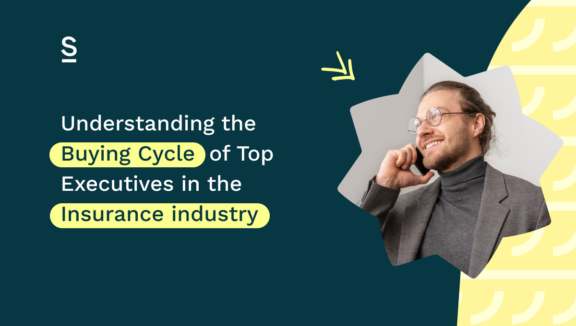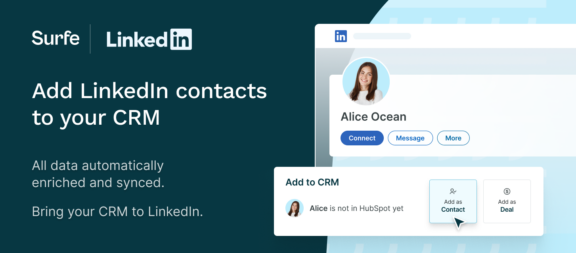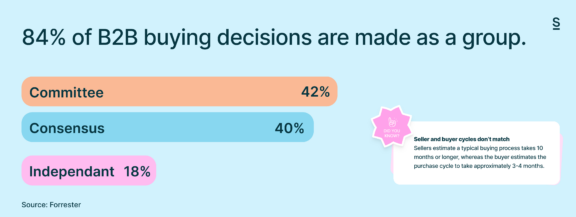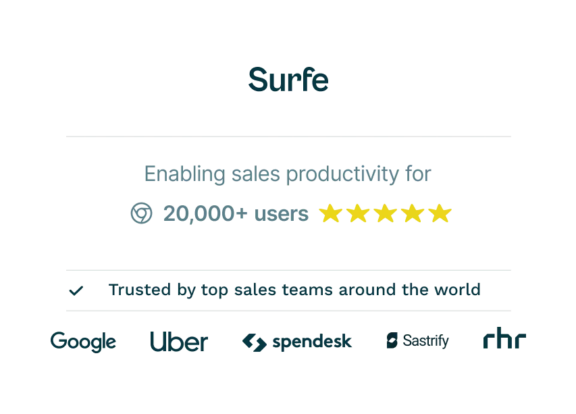Understanding the Buying Cycle of Top Executives in the Insurance industry

Selling to top executives in the insurance industry is a nuanced game, one that requires patience, strategy, and above all, a deep understanding of when your prospects are ready to buy from you. Executives in this sector are tasked with navigating complex landscapes involving risk, compliance, and ever-changing regulatory frameworks, all while making decisions that could affect their company’s stability for years to come. For sales professionals targeting this market, understanding the buying cycle of these executives is critical to winning deals and fostering long-term partnerships.
We’re here to walk you through the stages of the buying cycle in the insurance industry, show you how to identify where an executive is in that cycle, and offer strategies for aligning your sales approach to each phase. Armed with these insights, you’ll be better positioned to create tailored solutions that resonate with top insurance decision-makers, ensuring your solution stands out in a crowded market.
Ready to dive in? We’ll cover:
- What is the Buying Cycle?
- Tracking the Stages of the Buying Cycle
- Aligning your Sales Strategy with Each Stage of the Buying Cycle
What is the Buying Cycle?
The buying cycle is the process a buyer goes through from the moment they become aware of a need or problem to the point where they make a final purchasing decision (and even beyond into the post-purchase stage). Understanding this cycle is essential when selling to top executives, particularly in the insurance industry, where decisions are often high-stakes, involve multiple stakeholders, and take place over extended periods.
Unlike other sectors where quick purchasing decisions are possible, the insurance industry’s complexity—marked by regulatory demands, compliance issues, and high-risk aversion—elongates and complicates the buying process. As a result, a more measured and consultative approach is often required to guide executives through each stage of their journey and convince them to sign on the dotted line.
Stages of the Buying Cycle
- Awareness: The executive becomes aware of a problem or opportunity. This may be triggered by internal challenges, market changes, or external events such as new regulations.
- Consideration: At this stage, the executive begins to research potential solutions. They may start gathering information and engaging with content that educates them about their options.
- Evaluation: The executive is now comparing different vendors and solutions, weighing factors such as ROI, scalability, and compliance with industry regulations.
- Decision: The executive selects the solution that best meets their needs, often involving key stakeholders in the final approval.
- Post-Purchase: After the deal is done, the executive assesses whether the solution is delivering the expected value and what more can be done to maximize it.
Tracking the Stages of the Buying Cycle
Understanding Executive Signals
In order to align your sales strategy effectively, it’s crucial to understand how to recognize where an executive is in their buying journey. Unlike more transactional consumer buyers, insurance executives often drop subtle hints about their progress through the cycle, and these signals are found in their behavior rather than their words.
- Awareness Stage Signals: The executive may start engaging with industry reports, thought leadership articles, or regulatory updates.
- Consideration Stage Signals: You might notice them asking more specific questions about trends, solutions, or best practices in the insurance sector. This is a sign they are exploring options.
- Evaluation Stage Signals: Here, executives will often request case studies, ROI calculations, or product demos, as they are now looking to make side-by-side comparisons between your offering and those of your competitors.
- Decision Stage Signals: A sudden focus on pricing, contract terms, or timelines often indicates that the executive is nearing a decision.
- Post-Purchase Stage Signals: After the purchase, executives will be keen to ensure a smooth onboarding process and may ask for training resources or regular check-ins.
Get the Most Out of Your Tech Stack
To accurately pinpoint where an executive is in their buying cycle, you need more than intuition—you need data. Several tools and techniques can help you track and understand their journey:
- CRMs: Customer Relationship Management (CRM) systems can capture and analyze interactions with your prospects, helping you identify buying signals and predict when they may move to the next stage.
- Buyer Intent Data: Platforms that monitor content engagement, search behavior, and social activity can provide real-time insights into what topics and solutions an executive is currently exploring.
- Analytics Tools: Web analytics, email tracking, and ABM (Account-Based Marketing) platforms allow you to see how an executive interacts with your content, providing clues as to their level of interest and progression.

Aligning Your Sales Strategy with Each Stage of the Buying Cycle
Awareness Stage
Goal: Generate interest and establish your credibility as a trusted advisor in the insurance industry.
Strategies:
- Leverage thought leadership through white papers, blogs, and speaking engagements that highlight industry challenges, trends, and risks.
- Utilize social selling tactics on platforms like LinkedIn, offering insights rather than pitching products. Share relevant industry updates or research to get on an executive’s radar.
- Focus on educating rather than selling. Executives in this stage need to understand why they have a problem before they start thinking about solutions.
Consideration Stage
Goal: Position your solution as a viable option among other choices.
Strategies:
- Offer more in-depth materials such as case studies, white papers, and detailed product information to demonstrate the value of your solution.
- Engage directly with the executive by offering one-on-one meetings or webinars to delve deeper into their unique challenges and how your solution can address them.
- Keep the conversation consultative. Executives in this stage are looking for partners who understand their specific needs and the nuances of the insurance industry.
Evaluation Stage
Goal: Differentiate your solution from competitors.
Strategies:
- Provide tailored product demos and offer personalized ROI analysis specific to the executive’s company, addressing both the financial and operational benefits.
- Share testimonials or case studies from similar organizations in the insurance sector to build trust and credibility.
- Be ready to handle objections. Executives in this stage will likely have concerns about compliance, scalability, or cost. Address these head-on, emphasizing the unique aspects of your solution.
Decision Stage
Goal: Encourage your executive to make a purchasing decision from you.
Strategies:
- Simplify the purchasing process with transparent pricing, clear contract terms, and a straightforward implementation plan.
- Ensure all decision-makers are aligned. The insurance sector often involves multiple stakeholders, so make sure everyone is on the same page to avoid last-minute roadblocks.
- Be prompt in addressing any final concerns or hesitations, and always have the next step clearly outlined.
Post-Purchase Stage
Goal: Ensure satisfaction and build the foundation for a long-term partnership.
Strategies:
- Offer comprehensive onboarding support to help the executive’s team fully utilize your solution. This is especially important in the insurance industry, where complex products often require detailed training.
- Conduct regular follow-ups to gather feedback and identify opportunities for upselling or cross-selling. A positive post-purchase experience can turn a one-time buyer into a loyal advocate.
Understanding the Buying Cycle of Top Executives in the Insurance industry
Challenge 1: Extended Buying Cycles
Due to the complexity of the insurance industry, buying cycles can be significantly longer than in other sectors. Sales teams may find it challenging to maintain momentum over such an extended period.
Focus on nurturing the relationship through consistent, value-driven touchpoints. Provide new insights, regulatory updates, or other valuable content to keep executives engaged without being overly sales-driven.
Challenge 2: Multiple Decision-Makers
Insurance organizations often involve several stakeholders in purchasing decisions, including executives from risk, compliance, and legal departments. Navigating these layers can be tricky.
Engage all relevant stakeholders early on. Host workshops or tailored demos to ensure each party understands how your solution meets their specific needs. This can also help speed up decision-making when it comes time to finalize the purchase.
Challenge 3: Regulatory and Compliance Considerations
Regulatory compliance is a major concern in the insurance industry, and any solution that doesn’t meet the strict requirements can be a non-starter.
Position your solution as fully compliant and beneficial for risk mitigation. Provide detailed documentation that outlines how your solution adheres to the latest industry regulations, and be prepared to answer any compliance-related questions.

Adapting to Changing Buying Cycles
The buying cycle is not a static process, especially in the insurance industry where external factors such as new regulations, economic shifts, or emerging risks can cause sudden changes. It’s important to continuously monitor the executive’s progress through the cycle and adjust your strategy as needed.
Leveraging Feedback for Continuous Improvement
Feedback is a goldmine for insights. After each stage, ask for feedback to understand what worked, what didn’t, and how you can improve your approach. Use this information to refine your strategy for future engagements with other executives in the insurance industry.
Let’s Wrap It Up!
Selling to top executives in the insurance industry requires patience, strategy, and a deep understanding of the buying cycle. From recognizing early signals to aligning your approach at each stage, being proactive and informed can significantly boost your chances of success.
By taking the time to map out and adapt to the buyer’s journey, you’re not just closing deals—you’re building long-term, valuable relationships.

Want to streamline your sales strategy and reach more executives in the insurance industry?
Surfe’s email finder provides you with up-to-date executive contact details, so you know your outreach efforts won’t go unnoticed.
Frequently Asked Questions (FAQs)
What’s the most important stage in the buying cycle?
While every stage is important, the Evaluation stage is often where you can differentiate your solution from competitors and build the most credibility.
How can I speed up an extended buying cycle?
Maintain engagement through regular touchpoints and provide value at every step without pushing too hard. The goal is to stay top-of-mind while positioning yourself as a trusted advisor.
What’s the best way to engage multiple stakeholders?
Engage them early and offer tailored content or demos that speak to their specific concerns and roles within the company.


